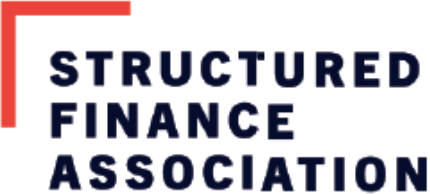SFA Response To CFPB on ATR-QM Rule
article by Structured Finance Association
Main Takeaway
In September 2019, SFA shared with the Consumer Financial Protection Bureau (CFPB) its initial observations on the bureau’s proposed approach to handling the January 1, 2021, expiration of the “GSE patch.” The patch exempts mortgages eligible for purchase by the government-sponsored enterprises (GSEs) Fannie Mae and Freddie Mac from the federal government’s qualified mortgage (QM) rule. SFA’s members overwhelming support eliminating the patch in favor of consistent rules for all market participants.
Background
Consumer protections built into the Dodd-Frank Act, including its requirement that lenders make an effort to ensure borrowers have the ability to repay their loans, were meant to address concerns about unsafe and irresponsible lending. To that end, the QM rule requires that borrowers’ monthly debt-to-income (DTI) ratio be 43% or less. Currently, the rule exempts mortgages eligible for purchase by the GSEs. This is known as the GSE patch.
Policy makers continue to debate how best to avoid future financial meltdowns arising out of imprudent residential mortgage lending, and the CFPB is contemplating replacing the GSE underwriting standards. In July 2019, the bureau released an advance notice of proposed rulemaking (ANPR) that posed questions about whether underwriting standards should be required at all for a QM if other elements of the definition are satisfied. The ANPR also asked if underwriting should be limited to higher priced, riskier loans, consist of standards that are similar to existing standards or that supplement or replace them, and provide a conclusive or rebuttable presumption of compliance.
To prepare to respond to the ANPR, SFA surveyed its members and convened a QM symposium in June 2019. The event brought together regulators, policymakers, issuers, investors, law firms, housing and community advocates, rating agencies, diligence firms, and data and analytic providers to discuss the ability-to-repay-QM rule and the implications of the expiration of the GSE Patch.
SFA’s Key Points
- SFA members are absolutely committed to protecting borrowers from unaffordable loans, but, at the same time, they want to expand access to responsible credit for credit-worthy borrowers. Any solution should be considered in the context of “guardrails” not “blocked pathways.”
- The product features and restrictions currently in place should stay; they are emblematic of the kinds of specific and clear guardrails that the CFPB is well-positioned to promulgate and enforce.
- A final rule, SFA members believe, should make clear that there is room for vibrant, responsible non-QM lending. Detailing minimum standards for acceptable forms of third-party records for documenting income and financial resources would be one important way for the CFPB to meet this objective.
- Many industry participants are convinced that an over-reliance on DTI ratios as an underwriting yardstick unintentionally limits credit availability for a substantial population of credit-worthy borrowers.
- SFA members overwhelmingly support eliminating the GSE patch because they believe it exacerbates the GSE’s unfair advantage for loans above 43%. The regulatory framework should provide consistent rules for all market participants across segments to ensure the GSEs are not granted preferences that add to their structural market advantage.
- Members recognize that, to avoid undesirable market consequences, careful consideration must be taken when weaning the market from the GSE patch and any other regulatory changes made to the definition of a QM.
- While some members are open to the idea of eliminating CFPB-issued underwriting requirements to determine QM, the majority generally support the CFPB issuing some guidelines.
- There is a path forward for the CFPB to protect consumers from loans they cannot afford while also creating a framework that ensures the availability of affordable and accessible credit. The ANPR process is an important first step.

